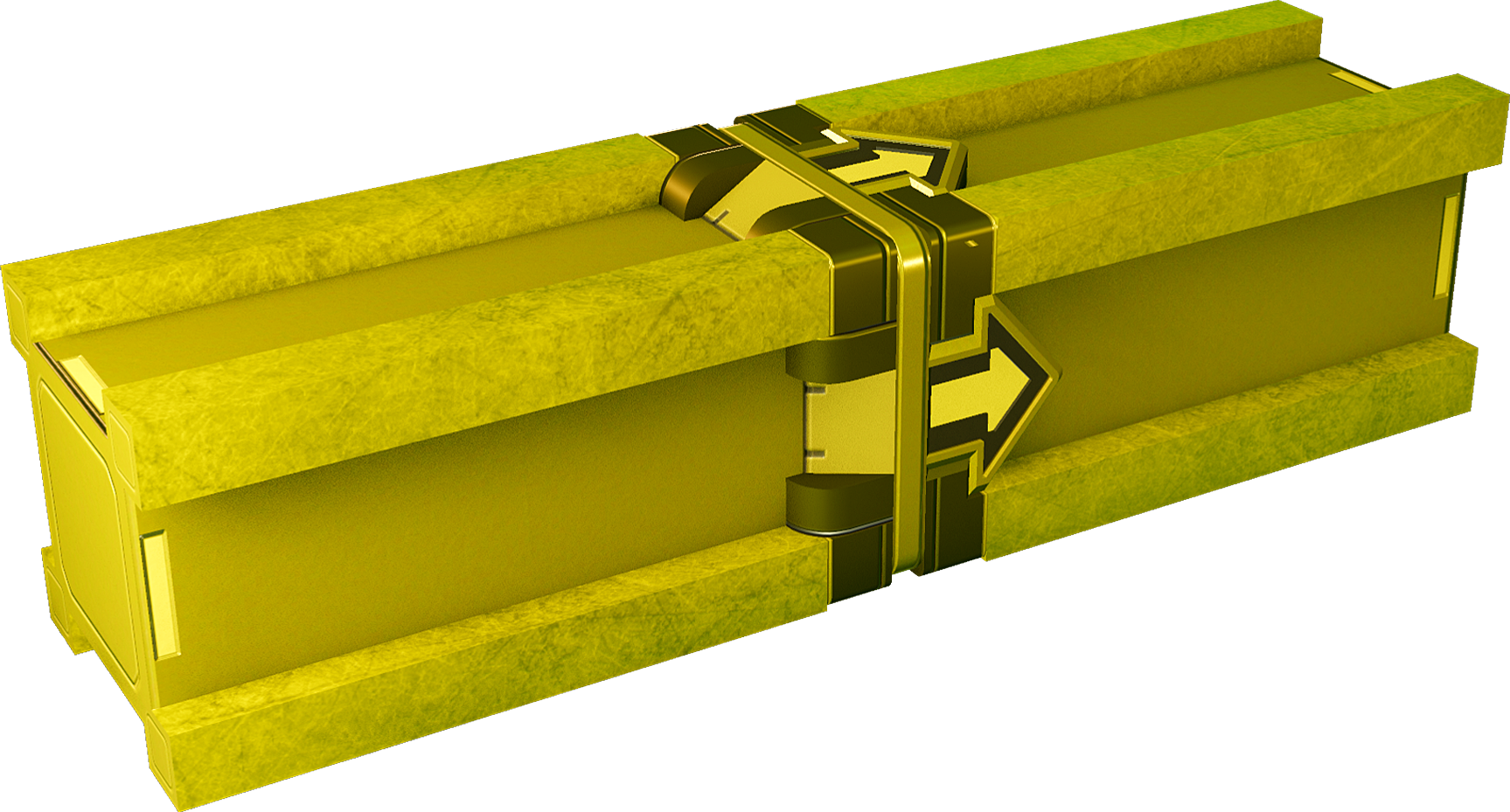Difference between revisions of "Rail relay"
Jump to navigation
Jump to search
(Mark as closed alpha content) |
|||
| (5 intermediate revisions by one other user not shown) | |||
| Line 1: | Line 1: | ||
{{ClosedAlphaContent}} | |||
{{Otherlang2 | {{Otherlang2 | ||
|de=Rail_relay:de | |de=Rail_relay:de | ||
|fr=Rail_relay | |fr=Rail_relay/fr | ||
|zh-cn=单向轨道中继器 | |zh-cn=单向轨道中继器 | ||
|ru=Рельсовое реле | |ru=Рельсовое реле | ||
|ua=Рейкове реле | |ua=Рейкове реле | ||
}} | }}{{SB Infobox Begin | ||
= | |{{SB Infobox Header | ||
|image=[[Image:Starbase rail relay.png]] | |||
|factionLogo= | |||
[[ | |caption= | ||
< | |name= | ||
< | |border=none | ||
}} | |||
|{{SB Infobox Device General Information | |||
|type=Rail device | |||
|function=Creates rail sub-networks | |||
|size=24×24×96 cm | |||
|mass=412.72 | |||
|volume=41.58 | |||
|corrosionResistance=400 | |||
|suppressUnitsKg | |||
|suppressUnitsKv | |||
}} | |||
<!-- | |||
|{{SB Infobox Device IO | |||
|electricIn= | |||
|electricOut= | |||
|energyCapacity= | |||
|coolantIn= | |||
|coolantOut= | |||
|coolantCapacity= | |||
|coolantRefresh= | |||
|heatGeneration= | |||
|heatDissipation | |||
|propellantIn= | |||
|propellantOut= | |||
|propellantCapacity | |||
|fuelIn= | |||
|fuelOut= | |||
|fuelCapacity | |||
|sockets= | |||
|YOLOLchips= | |||
|modInterfaces= | |||
|deviceInterfaces= | |||
}} | |||
--> | |||
|{{SB Infobox Device Construction | |||
|headerOverride= | |||
|aegisium= | |||
|ajatite= | |||
|arkanium= | |||
|bastium=100% | |||
|charodium= | |||
|corazium= | |||
|exorium= | |||
|haderite= | |||
|ice= | |||
|ilmatrium= | |||
|karnite= | |||
|kutonium= | |||
|lukium= | |||
|merkerium= | |||
|nhurgite= | |||
|oninum= | |||
|surtrite= | |||
|tengium= | |||
|ukonium= | |||
|valkite= | |||
|vokarium= | |||
|xhalium= | |||
}} | |||
}}<section begin=summary/>A rail relay is used to divide a rail network into separate sections with separate sub-networks to enable the creation of modular rail systems. They function similarly to [[Network relay|network relays]]<section end=summary/> | |||
== Basic information == | == Basic information == | ||
Rail relays connect to a rail network like any other rail piece, but only transmits data in one direction | |||
* One end of the relay acts as the "input" connection | |||
* The other end acts as the "output" connection | |||
When the relay is powered, changes made to device fields connected to the input propagate will apply to all similarly named device fields that are connected to relay output. | |||
== Device fields == | == Device fields == | ||
{|class="wikitable" | {|class="wikitable" | ||
| Line 38: | Line 96: | ||
| 0/1 | | 0/1 | ||
|} | |} | ||
To learn more about how to use fields, consult these wiki pages: | |||
* [[Universal tool|Universal Tool]] | |||
* [[Data networks|Data networks]] | |||
* [[YOLOL|YOLOL]] | |||
[[Category:Devices and machines|Rail relay]] | [[Category:Devices and machines|Rail relay]] | ||
Latest revision as of 23:13, 9 September 2021
Rail relay
Type Rail device
Function Creates rail sub-networks
Size 24×24×96 cm
Mass 412.72 kg
Volume 41.58 kv
Corrosion resistance 400
Composition
A rail relay is used to divide a rail network into separate sections with separate sub-networks to enable the creation of modular rail systems. They function similarly to network relays
Basic information
Rail relays connect to a rail network like any other rail piece, but only transmits data in one direction
- One end of the relay acts as the "input" connection
- The other end acts as the "output" connection
When the relay is powered, changes made to device fields connected to the input propagate will apply to all similarly named device fields that are connected to relay output.
Device fields
| YOLOL field | description | range |
|---|---|---|
| IsEnabled | On/Off | 0/1 |
To learn more about how to use fields, consult these wiki pages:
